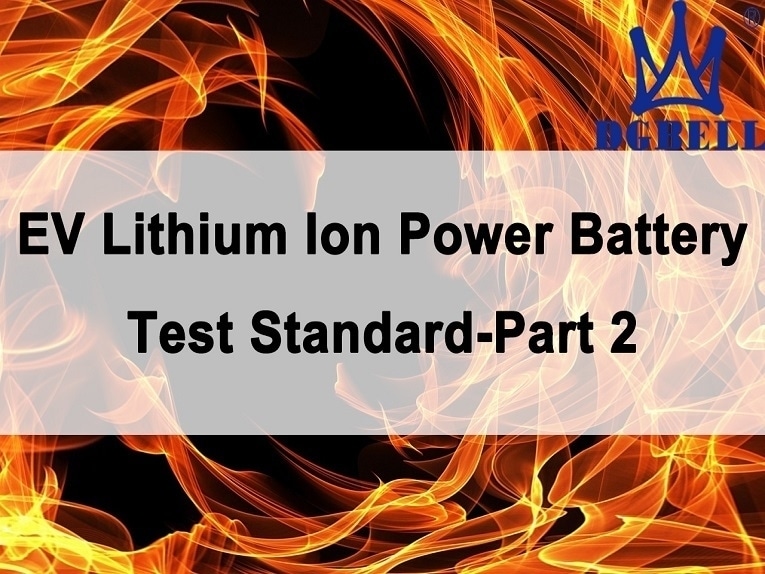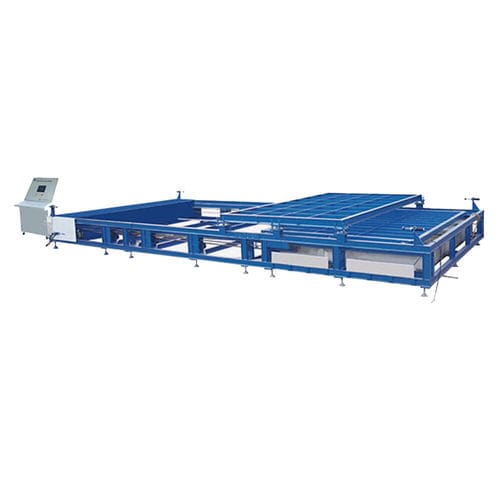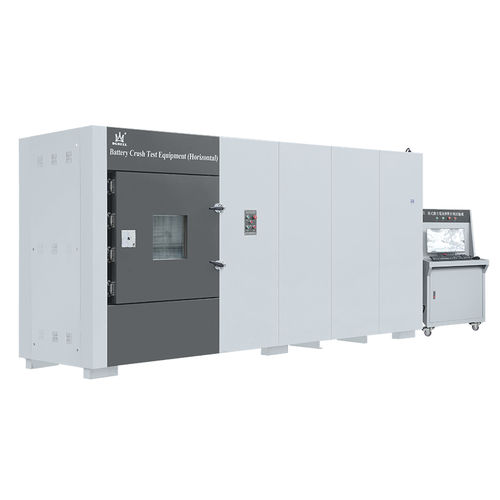
#Novedades de la industria
Estándar de prueba de batería de iones de litio para vehículos eléctricos, parte 2
Estándar de prueba de batería de iones de litio para vehículos eléctricos, parte 2
Para evaluar la función del sistema de protección de sobrecarga / sobredescarga, puede ocurrir cuando la carga o descarga de la batería excede los límites recomendados por el fabricante, como falla del cargador. Casi todos los estándares y regulaciones estipulan este artículo de prueba
The important safety hazards during overcharge are electrolyte decomposition, cathode and anode breakdown, diaphragm degradation and exothermic decomposition of lithium coating, resulting in battery overheating and heat out of control. If sufficient temperature is reached (e.g. 200 ℃), the fluorinated adhesive will undergo exothermic reaction with carbon lithium. The factors affecting the test results include the charging rate and the final SOC.
For overcharge test, charge the battery according to the charging current specified in the standard until the set end charging conditions (such as 200% SOC, 130% SOC, etc.) are reached, or the protection device is used (such as disconnecting charging, reducing current, etc.). There are great differences in the provisions of some standards and regulations on overcharge current and charging end conditions, resulting in great differences in test results, and the test results of different standards and regulations are not comparable. The starting temperature of thermal runaway of overcharged battery (SOC > 100%) shows a lower starting temperature (in the range of 65 ~ 80 ℃).
Serious accidents generally occur on battery cells with severe overcharge (e.g. twice the rated capacity), but repeated charge / discharge cycles under medium overcharge (110% SOC) may also lead to internal short circuit or failure of the battery.
Overdischarge (or forced discharge) test is also very important. The safety hazard during excessive discharge is polarity reversal, resulting in oxidation of anode collector and plating on cathode side. Even small overdischarge can lead to dendrite formation and eventually short circuit. During the over discharge test, discharge the fully charged battery (e.g. 1C rate for 1.5h, or C / 3 rate discharge until the tested equipment interrupts or limits the discharge). The test parameters of different standards and regulations vary greatly. It can be concluded that the test results may depend on the standards or regulations followed. Therefore, it is necessary to unify the test parameters for comparable tests.
2.2 Severe environment test
The environmental test aims to evaluate the safety performance of the system under the conditions of temperature change, such as fire caused by ambient temperature in different regions or accidents caused by extreme weather. The most common severe environmental tests are described below: temperature shock and cycle test, thermal stability test, over temperature test and external fire test.
2.2.1 Temperature shock and cycle test
This test is important to assess changes in DUT integrity due to exposure to extreme and sudden temperature changes (e.g., expansion and contraction of battery components when the vehicle enters or leaves a heated or frozen garage during transportation). During the temperature shock and cycle test, the DUT will withstand two temperature limits, high temperature and low temperature, and maintain the specified time under each temperature limit. The temperature shock and cycle tests described in standards and regulations have different maximum temperature limits. The lower temperature limit of all standards and regulations is – 40 ° C (the minimum temperature of IEC62660-2 under live operation is – 20 ℃), although the upper temperature limit is different.
It is worth noting that UN / ECER-100.02:2013 allows the operation of protective equipment during this test, while in other international standards, protective equipment is disabled, which makes the test conditions more stringent.
2.2.2 Thermal stability test
This test is important to evaluate the stability of the battery at high temperature to identify the starting temperature of battery thermal runaway or the stability at high temperature. During the test, the temperature of the battery shall be increased in steps of 5 ℃ / min, increased to the specified temperature and maintained for 30min, or until major damage occurs to the DUT.
The provisions of SAEJ2464:2009 are more stringent. It requires not only a temperature rise rate of 5 ℃ / min, but also to be maintained for 30min in each temperature step, but also a maximum temperature of 300 ℃ (higher than the maximum working temperature of the battery) until the temperature reaches 300 ℃ or self heating occurs (greater than 1.0 ℃ / min). It is used to evaluate the thermal runaway start time and thermal stability of the battery.
Other standards evaluate the performance of the battery at high temperature. The purpose is not to achieve thermal runaway state, but to evaluate the thermal stability of the DUT at that temperature. The batteries were added in steps of 5 ℃ / min from room temperature, increased to 130 ℃, and placed at this temperature for 30min. Although thermal stability is very important for the safety of energy storage systems, they are not widely required in all standards.
2.2.3 Overtemperature test
The overheat test (also known as fast charge / discharge, overheat protection test) aims to evaluate the impact of temperature control failure or other protection function failure on the internal overheating of the battery.
For this test, both EU and international standards require that the active thermal control system (e.g. cooling system) of the DUT be turned off and the charge discharge test be carried out continuously. There is no time interval between charge and discharge, which will lead to the temperature rise of the DUT. Three international standards require that the test must be carried out in a confined space to evaluate the flammability of any gaseous material released from the battery during the test.
Relevant UN / ECE-R100.02:2013 do not require the test to be conducted in confined space. All standards require termination of the test in the event of DUT damage (e.g., electrolyte leakage, rupture, fire or explosion).
2.2.4 external fire test
The purpose of external fire test is to evaluate the explosion risk of battery or vehicle when exposed to high temperature or external flame. The fire source may be caused by fuel leakage from the vehicle itself or nearby vehicles.
Three types of tests:
(1) Radiant heat test: SAEJ 2464:2009 battery (100% SOC)
It is placed in a cylindrical metal device, which is heated by radiation. The temperature shall reach 890 ℃ within 90 s and be maintained for 10 min. Record the battery test process or after the test, including deformation, leakage, fire, explosion, etc.
(2) Prueba de proyectil: SAEJ 2929: 2013 expone el DUT a un fuego uniforme y hace que el DUT esté rodeado por una pantalla de malla de alambre de acero, de modo que los fragmentos causados por la explosión de la batería no puedan penetrar la pantalla de malla. Todo el sistema de batería se someterá a altas temperaturas y al ambiente de llamas hasta que el sistema de batería esté completamente en llamas. Cuando se alcanza esta condición, retire la fuente de calor externa y la fuente de llama y deje que el sistema de batería continúe ardiendo. Cuando no hay llama visible, la prueba se completa y el período de observación comienza después de la prueba.
(3) Prueba de combustión del cárter de aceite: la prueba descrita en UN/ ECE-R 100.02: 2013 e iso6469-1: 2019 se produce al quemar combustible en el cárter de aceite. El DUT se coloca sobre una mesa de fricción sobre el disco de prueba cargado de combustible. Durante la prueba, encienda el combustible en el disco de prueba al menos a 3M de distancia del dispositivo bajo prueba y precaliente el dispositivo bajo prueba durante 60 segundos. A continuación, coloque la bandeja de combustible debajo del dispositivo bajo prueba (la distancia es de 50 cm, o la altura desde el suelo de la superficie inferior del objeto de prueba cuando el vehículo está descargado, o según lo acordado entre el fabricante y el cliente) y exponga el dispositivo bajo prueba directamente a la llama durante 70s. Cubra la placa de cubierta refractaria del cárter de aceite y pruebe el dispositivo bajo prueba en este estado durante 60 segundos. Retire el cárter de aceite y espere durante 3 horas de acuerdo con UN / ECE-R 100.02: 2013 e ISO 6469-1: 2019 o hasta que el DUT alcance la temperatura ambiente. Si no hay signos de explosión durante la prueba, se pasa la prueba.
3. Conclusión
Este documento realiza un análisis comparativo completo de varios estándares y regulaciones sobre el desempeño de seguridad de las baterías de iones de litio para vehículos eléctricos en los elementos de prueba de seguridad eléctrica y entornos hostiles. Compare los parámetros de prueba y las condiciones utilizadas en los métodos de prueba descritos en estas normas y regulaciones. Del análisis realizado se extraen las siguientes conclusiones:
Las condiciones de prueba (por ejemplo, SOC, temperatura) de algunas pruebas (por ejemplo, sobrecarga, choque térmico, fuego externo, etc.) son bastante amplias. Esto hace que sea imposible que diferentes estándares obtengan datos, y la diferencia de parámetros puede deberse a diferentes escenarios considerados por los fabricantes de estándares. Para realizar una prueba justa y equivalente, se sugiere unificar los parámetros y condiciones de la prueba. Dado que el peor de los casos suele corresponder al máximo SOC, es lógico realizar pruebas relevantes en este caso. La mayoría de los estándares ya requieren un 100% de SOC, pero la regulación UN / ECE-R100.02: 2013 permite realizar pruebas a no menos del 50% de SOC.
También se prestará atención a la comparabilidad de las pruebas de componentes de celdas de batería, módulos y paquetes de baterías. Por ejemplo, se ha demostrado que la corriente inicial que se produce en una prueba de cortocircuito se ve afectada por el tamaño del dispositivo bajo prueba y su tipo de conexión (es decir, en paralelo o en serie).
Desde la perspectiva de la seguridad eléctrica y los estrictos requisitos de prueba ambiental de las baterías de iones de litio (celdas de batería, módulos de batería, paquetes de baterías o sistemas) para vehículos eléctricos, las condiciones de prueba requeridas por diferentes estándares y regulaciones son inconsistentes, por lo que los resultados de la prueba de los mismos elementos de prueba no son comparables.







